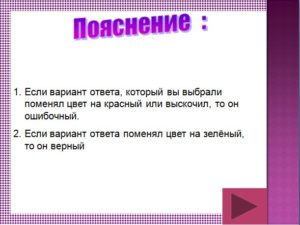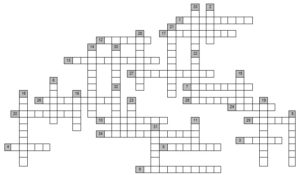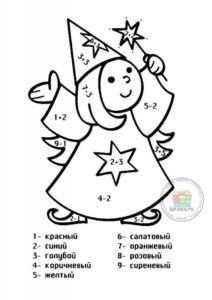mathsman
MKOW SOSH No. 2,
c. Irgakly, Stepnovsky R-on, Stavropol Territory
These games are designed for students of grades 5-6 (11-13 years old). Games are developing, cognitive in nature. They contribute to the development of thinking, memory, attention, creative imagination, the ability to analyze and synthesize, education of observation, habits of self-checking, teach to subordinate their actions to the task, bring the work started to the end. Games also develop communication skills, the ability to work in a team.
- Find out your number.
-
Touch it.
-
Make no mistake.
-
Best meter.
-
Find the answer.
-
I'll guess my birthday.
-
Find your place.
-
Instant count.
-
Let's do the math.
-
Don't yawn!
-
Rapid multiplication.
-
Rope.
-
Shots.
-
Game at 10.
-
Roughly 11.
-
Number sign.
-
Crosses are zeros.
There are 5 people in the game. On the back of each is attached a plate with some number (all numbers are different, for example 2, 4, 5, 7, 8). None of the players knows what number he got, but the sum of the numbers (26) the teacher announces to everyone. The task is to look at the numbers attached to the backs of the comrades, calculate the amount and determine their (missing to the total) number. It is not easy to do this, as none of the players are interested in showing their number.
Cut from plywood or from a thin plank several flat geometric shapes: square, rectangle, triangle, circle, semicircle and others. Tie one of the players eyes and ask to touch to identify and name each of the figures. Then offer to do it to other players, each time changing the location of the pieces.
Then the teacher changes the task, offering to remember the order of the arrangement of the figures and then, opening his eyes, decompose them from memory as they lay before when feeling.
The task can be greatly complicated if you take 2-3 figures, cut each into two parts and offer the player with his eyes closed, feeling parts of the figures, to collect them.
6-9 players line up in front of the audience. The host faces the participants of the game and calls one after another (with small pauses) different numbers. If the number is divided by 3 (or by 2, 4, 5, depending on the agreement), the players raise their right hand up. Whoever makes a mistake is out of the game. The game ends when 2-3 people remain in the line. They are declared winners.
A number of numbers are written on the board, for example: 24, 81, 49, 32, 72, 45, 56, 27 and 18. Two students come out to the board. At the command of the teacher, one on the left, the other on the right write numbers that multiply these results. The first person to reach the middle and complete the task correctly is considered the winner.
The teacher writes on the board in a column several examples on addition, subtraction, multiplication and division. For example:
156-39
87+58=
231-83
339:3
38∙4=
The three boys have their backs on the board. The teacher points to one example, let’s say a third from above. The whole class silently decides it. Whoever decides raises his hand. One of them is asked to say the answer loudly.
Those standing at the board turn to her face and try as soon as possible to find an example with the named answer. The first person to do this will receive one point.
The game can be repeated several times. The winner is the one who gets the most points. The number and complexity of examples depends on the level of knowledge of the players.
- I know each of you very well, but unfortunately, I don't know which one of you is having a birthday. But if you want, I can guess. Take a piece of paper and a pencil and write what I tell you.
First, write down what date you were born. Now double the number you wrote. Multiply it by 10, add 73. Multiply it by 5. Add the ordinal number of the month of birth (if you were born in May, then 5, if in October – 10, etc.).
Now tell me the result, and I'll tell everyone the date and month of their birth.
Explanation:
In order to find out the birthday, you need to subtract 365 from the result. The first one (in three digits) or two (in four digits) digits will show the number, and the last two - the serial number of the month of birth.
For the game, you need to prepare two sets of cards with numbers from one to ten (sets of different colors). Number cards are distributed to all players in any order. At the command of the teacher, the players line up in a column of two, four, but as soon as the leader gives the signal, everyone runs away. Those with signs, say, red, gather on one side of the room, blue on the other. Each group should be formed in one row in order of numbers. The winner is the team that managed to build first.
You can write not numbers on cards, but examples for addition or subtraction (but so that in the end you get all the necessary numbers from 1 to 10.). It'll make the game harder.
Ask three guys to come to the board. Let each write in a column of 5-6 examples for subtraction, observing one condition: what is reduced in the first line becomes subtracted in the second, what is reduced in the second line is subtracted in the third, etc.
Here are three such columns:
13-7 = 15-8 = 31-9
18-13= 17-15= 56-31=
25-18= 23-17= 61-56=
38-25= 31-23= 69-61=
43-38= 39-31= 73-69=
Then let each draw a line and write under your dictation the sum of the differences under his column (the numbers 36, 31 and 64).
Warn that you have dictated these numbers without counting them. Now let the guys check the results and make sure you gave the right answers.
Explanation:
To determine the sum of the differences, it is necessary in each column to subtract from the largest number (in the lower line on the left) the smallest number (in the upper line on the right). You will get: in the first column: 43-7 = 36, in the second: 39-8 = 31, in the third: 73-9 = 64. These are the sums of the differences of all numbers.
The teacher shows the children a tablet with numbers. Some numbers are written 2-3 times, while others are written once. It is necessary from the sum of numbers that occur 2-3 times, subtract the sum of numbers that occur once, and report the result. Calculations can be recorded. The winner is the one who completes the task first.
The game involves two teams of five people. Chest players have double-digit plates. Team signs differ only in color.
In 5-6 steps, a chair is placed in front of each team. The teacher offers players an arithmetic example of two or three actions. Suppose: 36:4∙5 or: (29+25):6∙5. Players in the mind calculate the result. The person with the answer sign (45 in this case) runs to the chair and sits on it.
Examples are made in advance depending on the numbers written on the cards. It is difficult to remember examples by ear, so it is better to write them on tablets and show them to teams. A point is awarded to the team whose representative will sit on the chair earlier.
- Think of any number less than 20. Multiply it by yourself. Now tell me what the resulting product is, and I'll give you the intended number.
Explanation:This game moment is best used before explaining the concept of a square number.
- Guys, I'm holding a rope. Its length is 120 cm. How to cut off a piece of 30 cm long without using a ruler? How to do this if you need to cut a piece of 45 cm long?
Explanation:(1) 30 cm represents a quarter of 120 cm. So the rope has to be folded in half, then in half and cut off one of the four pieces.
2) In this case, it is necessary to cut off the fourth part of the rope, a piece 90 cm long will remain. Then cut off from the remainder half - will remain 45 cm.
Two students come out to the board. The teacher suggests that they call fractions with a numerator one. The first name and record any fraction. The second should write a fraction smaller than the first. The first is a fraction, even smaller, etc. Students on the ground check. The game stops at the teacher's signal.
Playing in pairs. The first one records any of the numbers -1, -2, -3. The second orally (speaking aloud) adds to the recorded number any of the numbers -1, -2, -3 and records the result. The first orally (speaking aloud) adds to the recorded number any of the numbers -1, -2, -3 and records the result, etc. The winner is the one who writes 10.
Write down any two-digit number. Change the numbers, and you get the second number. Add up those numbers. The resulting number is a multiple of 11. Why?
I'm thinking of a number. Ask only one question, so that when you hear the answer, you can name the sign of the number I intended.
This game is played together. Each player strives to build (horizontally, vertically or diagonally) a chain of 4 consecutive cells. The moves take turns. For each move, the player marks the cage (one player with a cross, the other with a zero).
The winner is the first to build a 4-cell chain.
Literature used:
- Padalko A. E. Tasks and exercises for the development of creative imagination of students. - M. "Education", 1985.
- Minskin E. M. From Game to Knowledge. — M. “Education”, 1987.
- Shuba M.Y. Interesting tasks in teaching mathematics. — M. “Education”, 1995.
- Nagibin F.F., Kanin W.S. Mathematical box. - M. "Education", 1988.
- Lehman, I. Fascinating Mathematics. - M. "Knowledge", 1985
{module Google_kvadrat|none}




